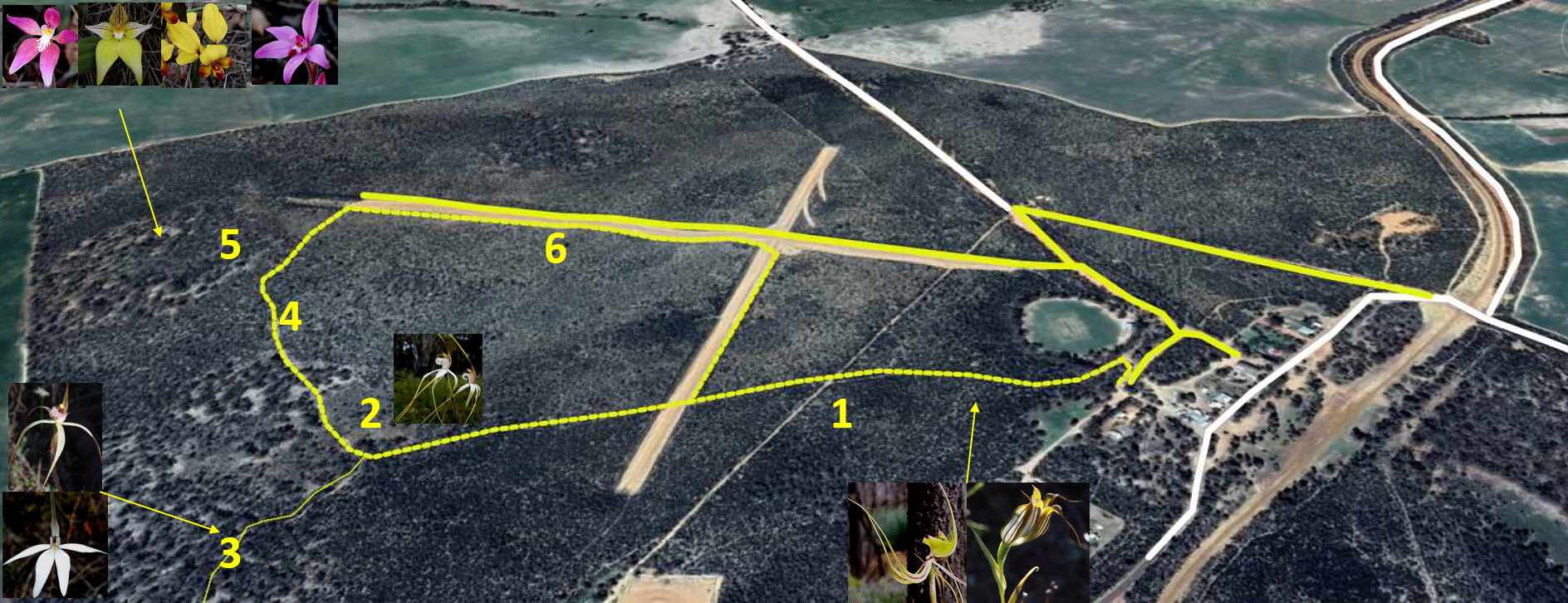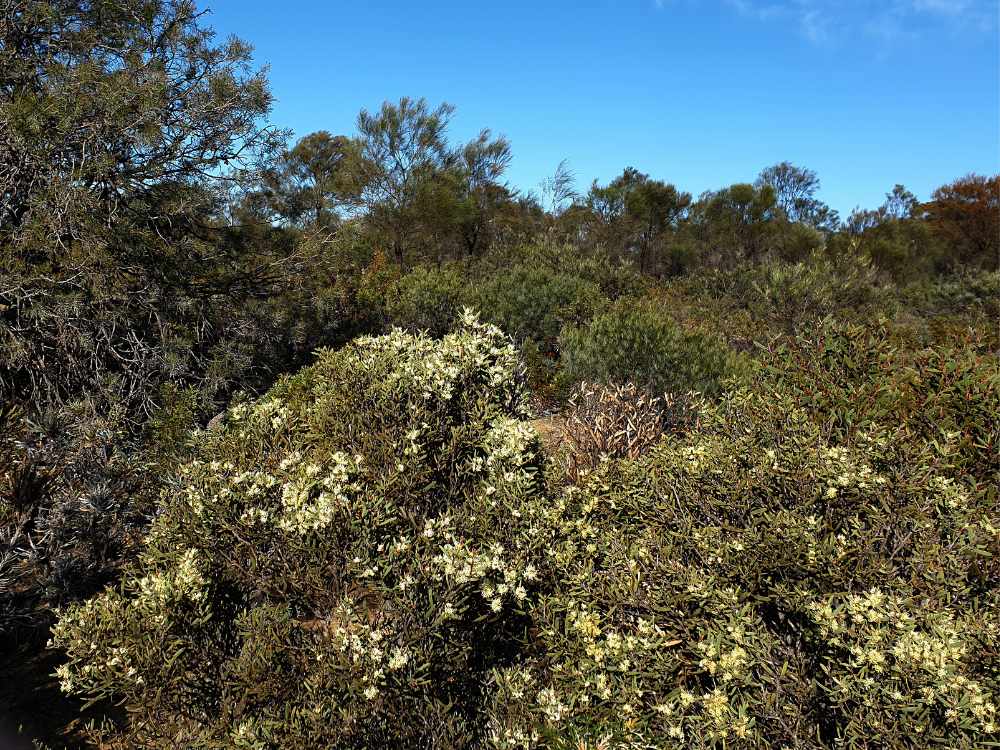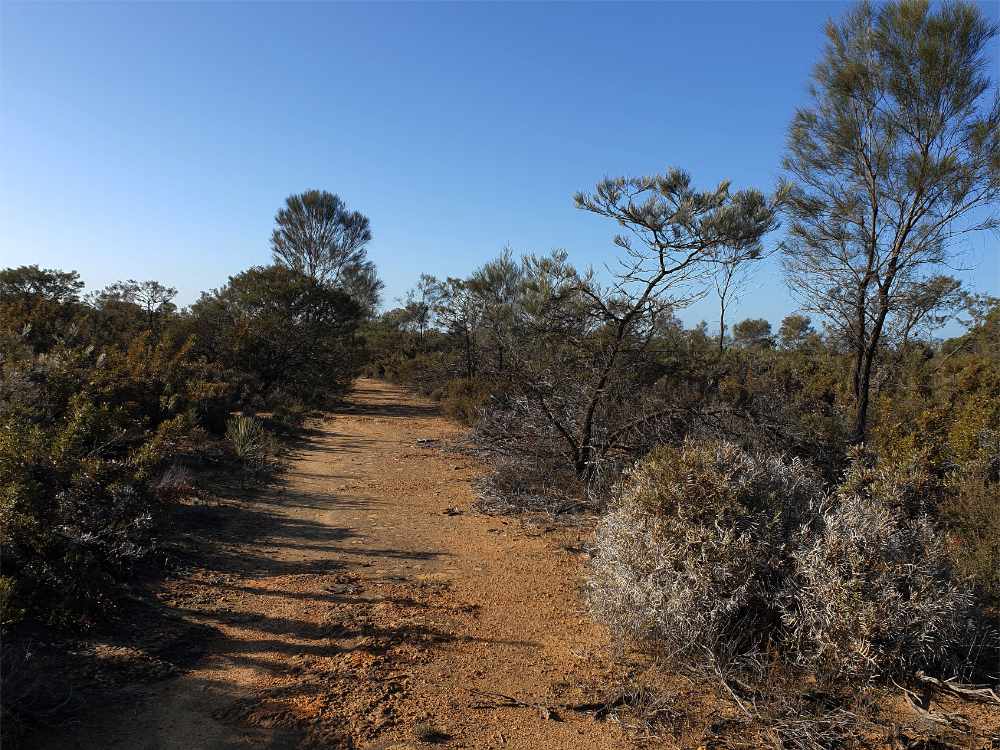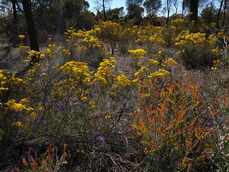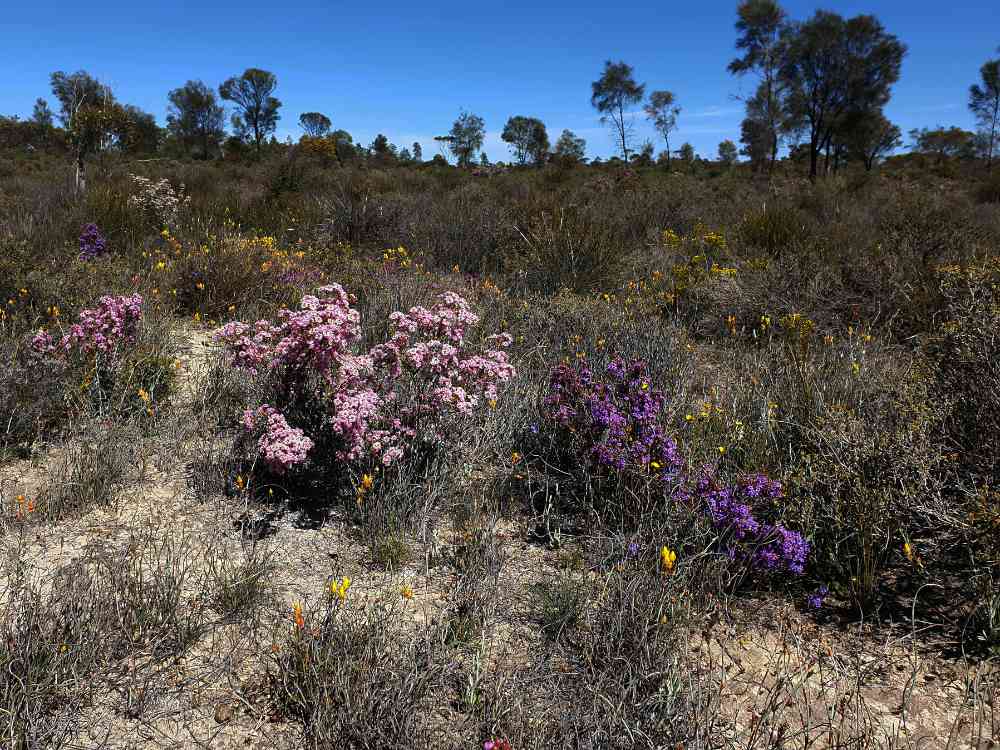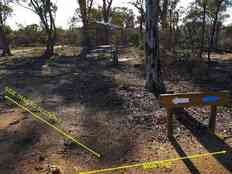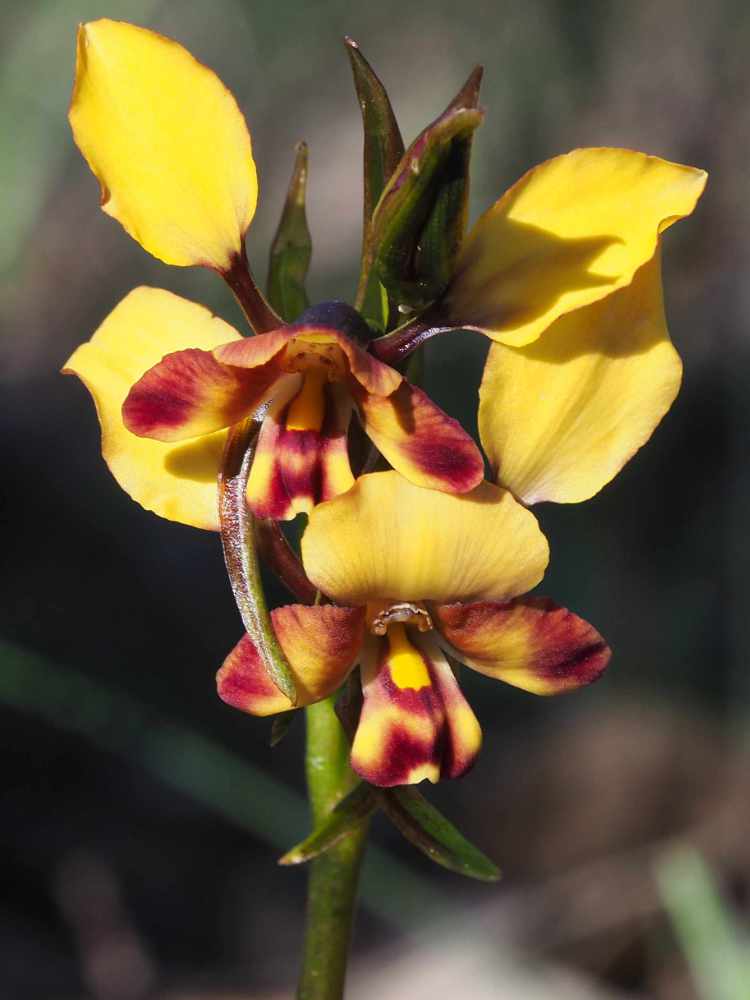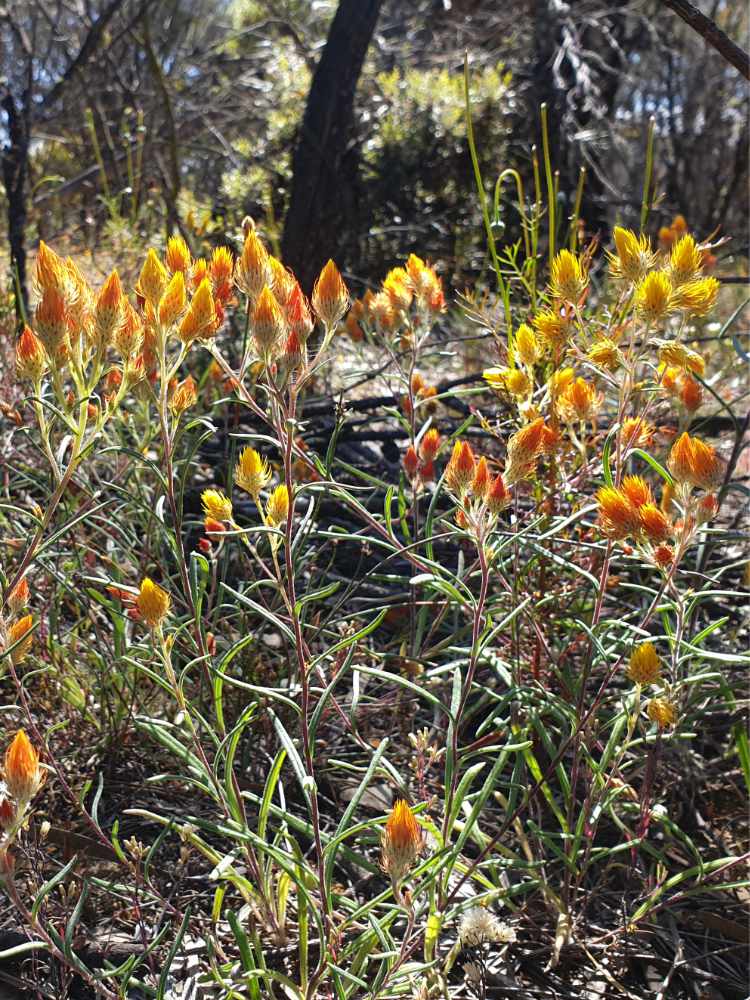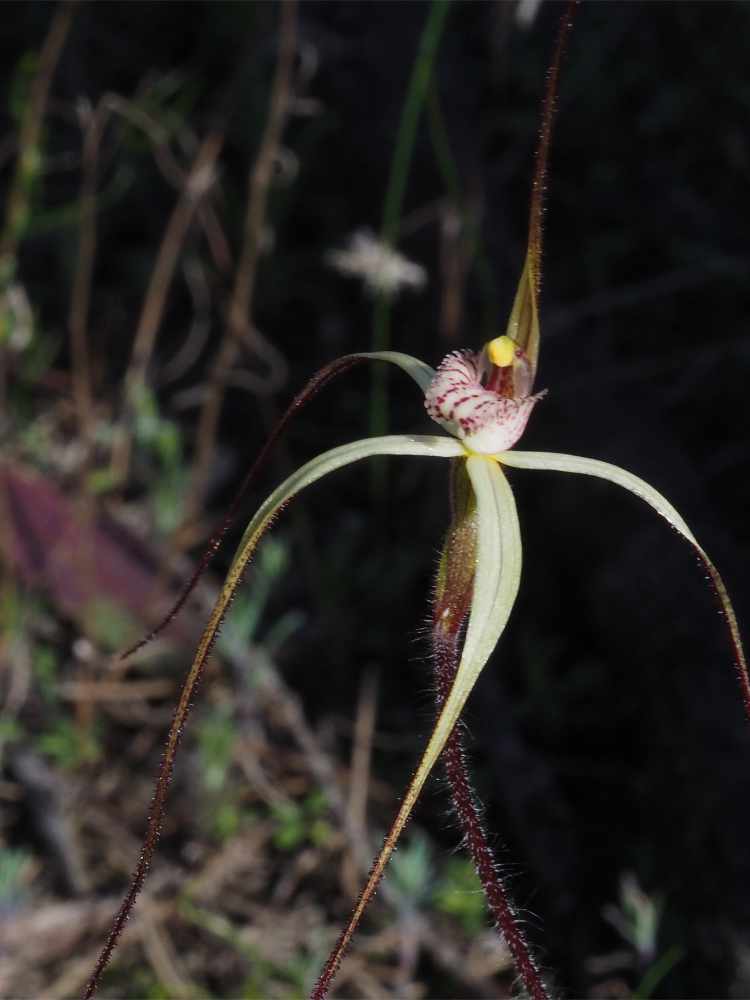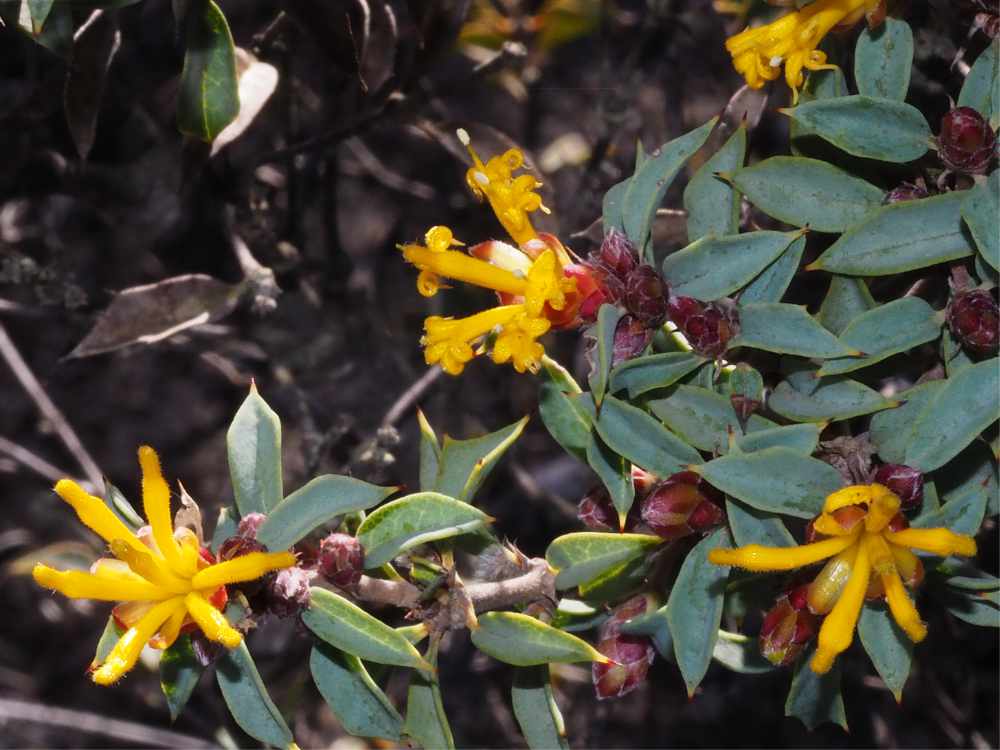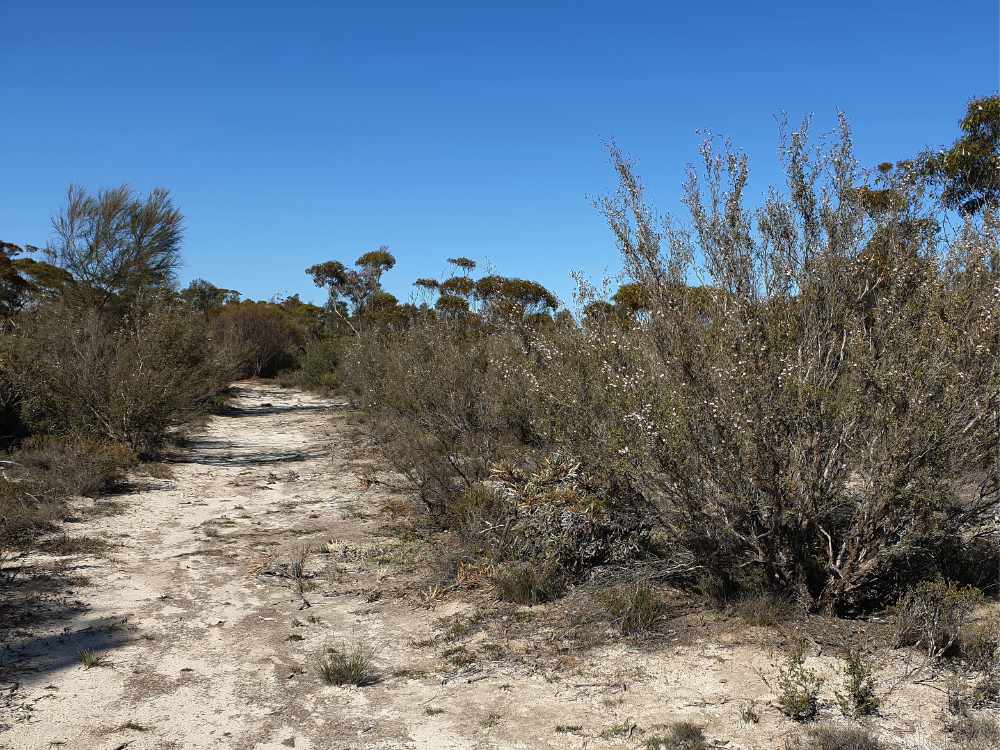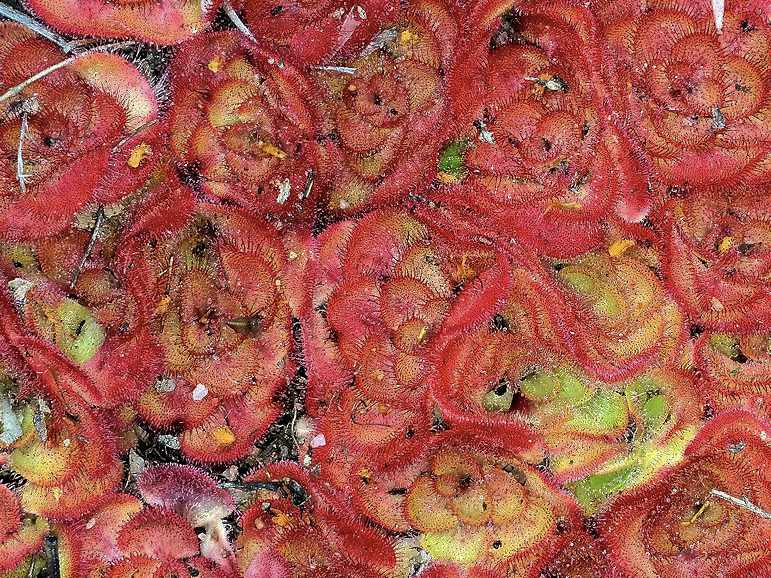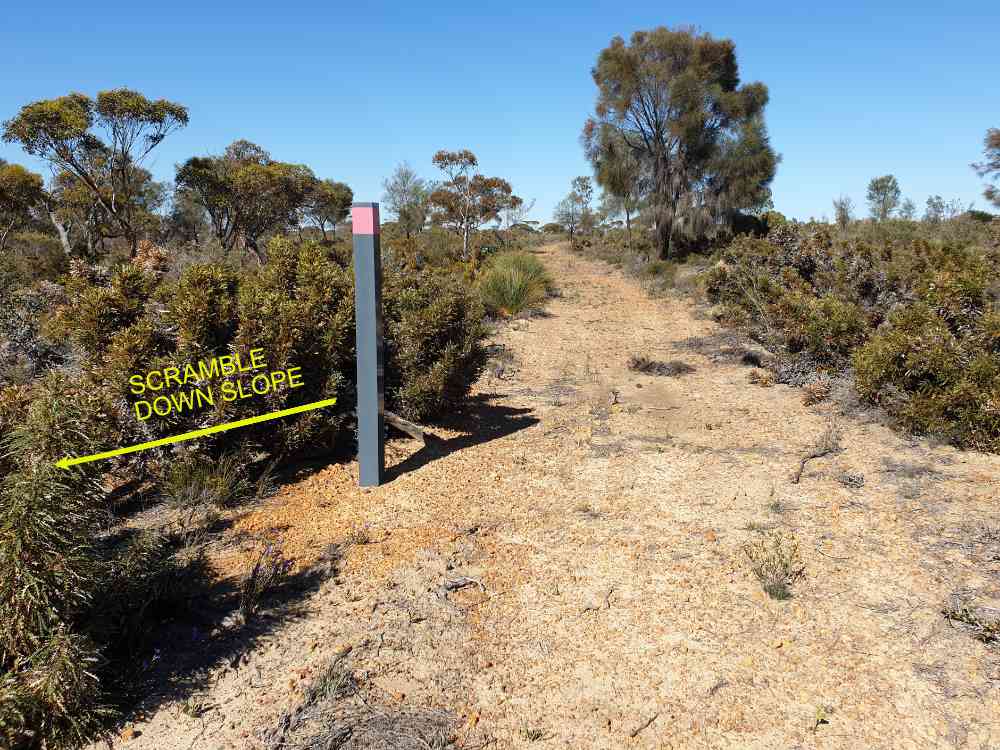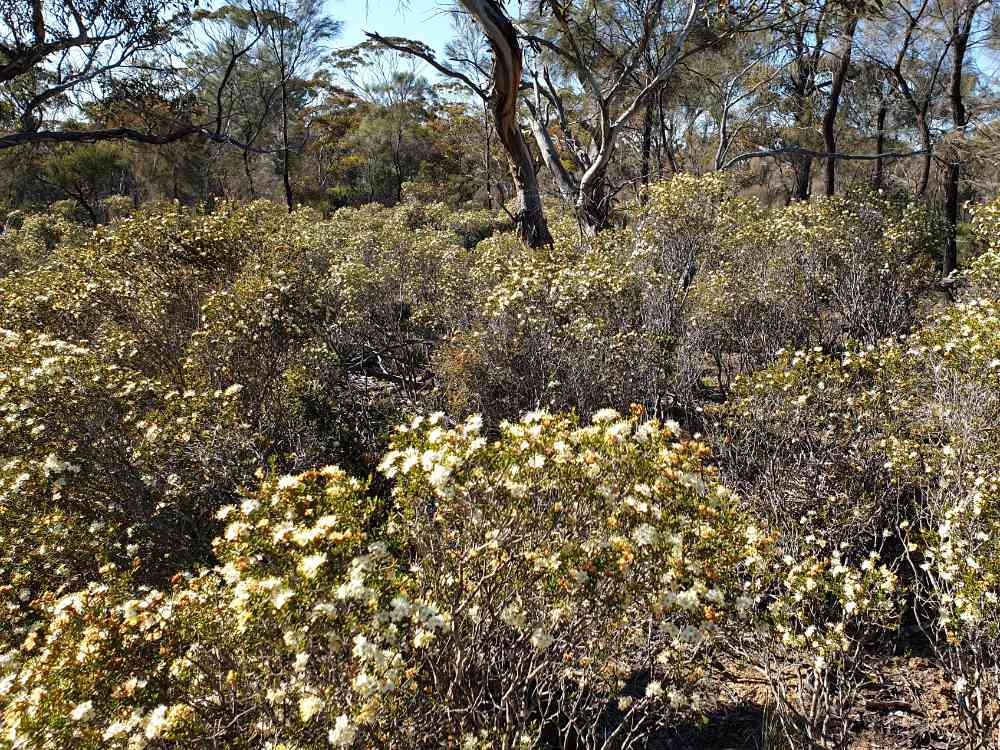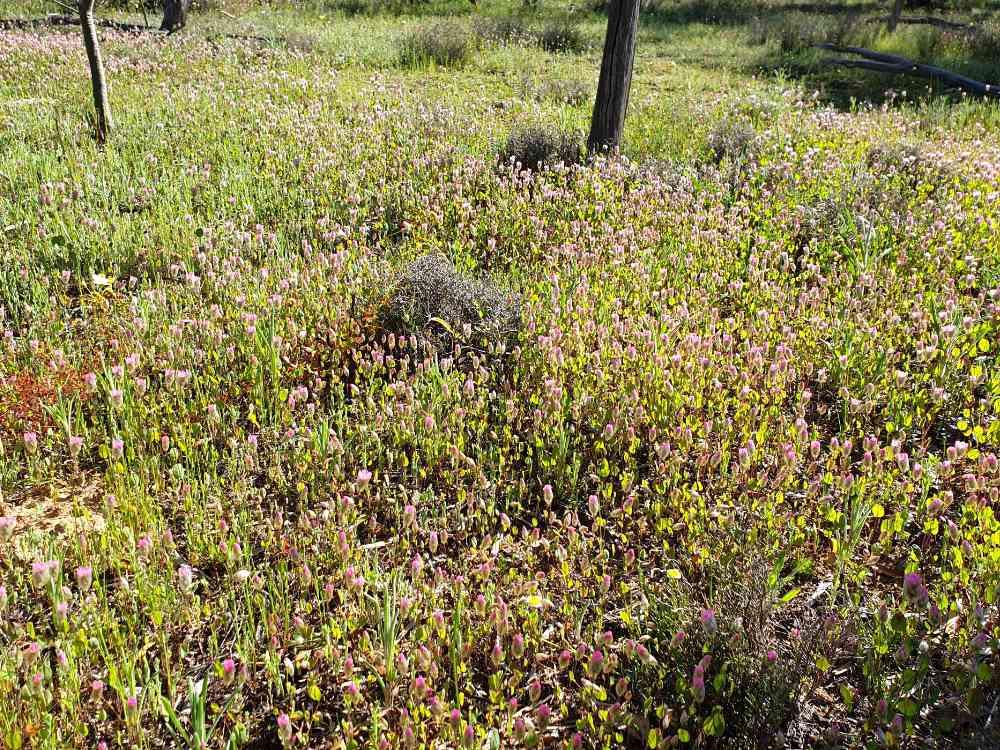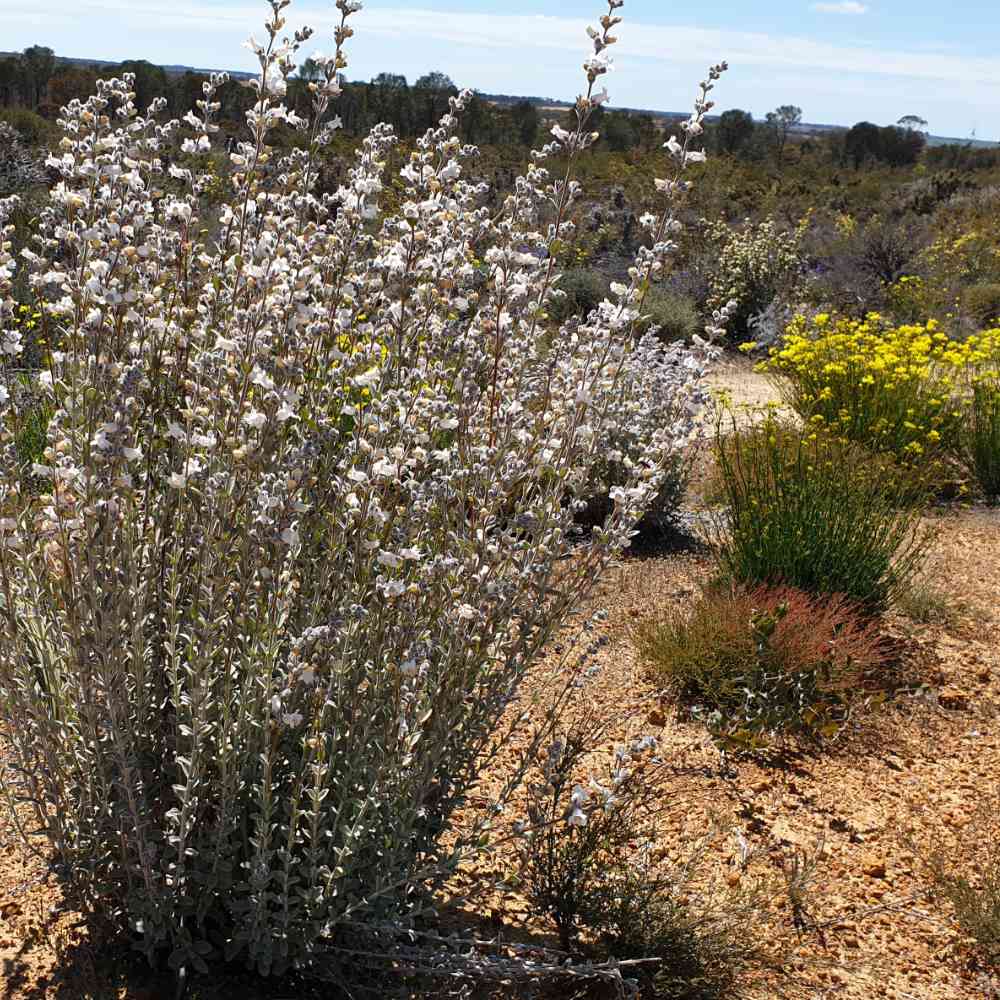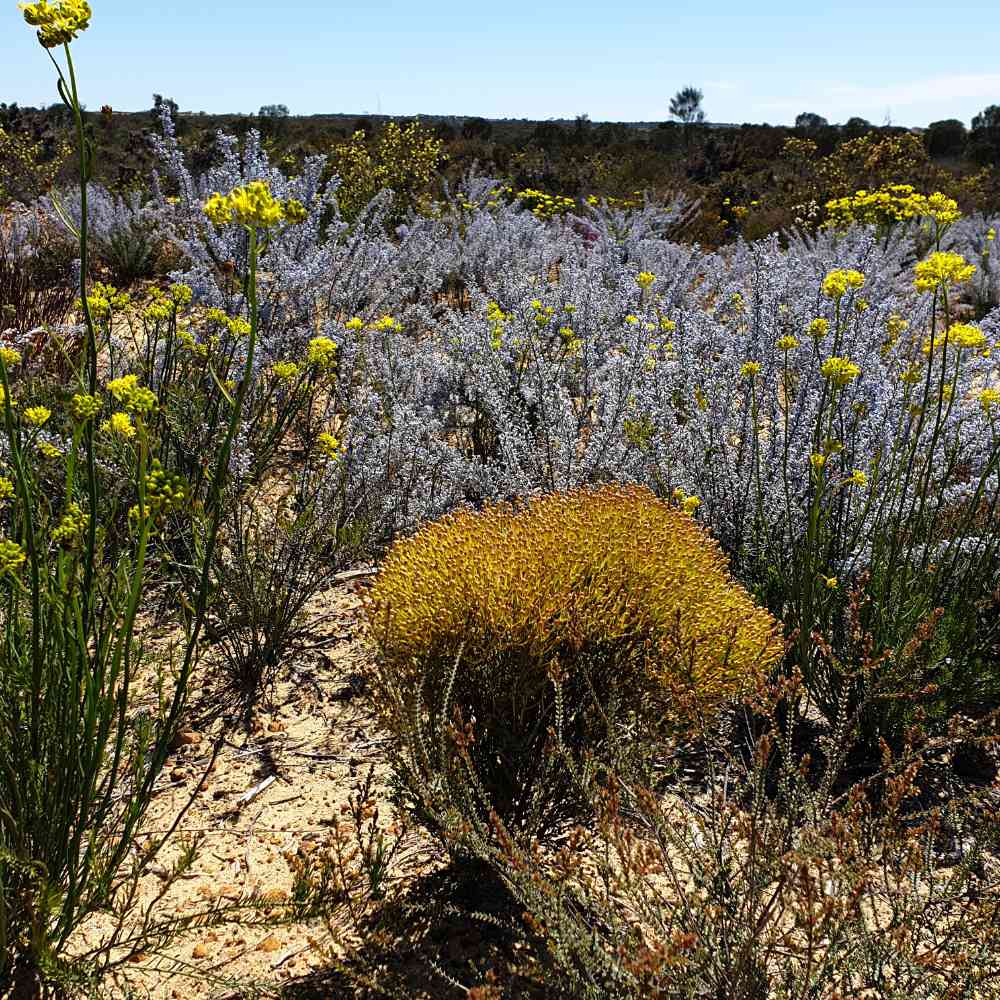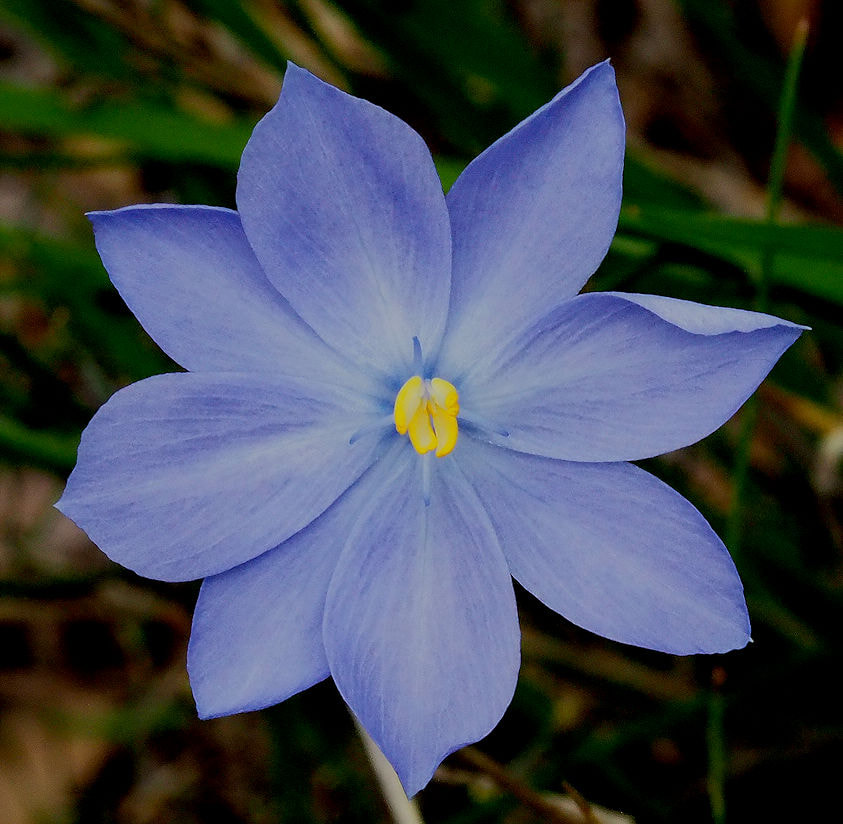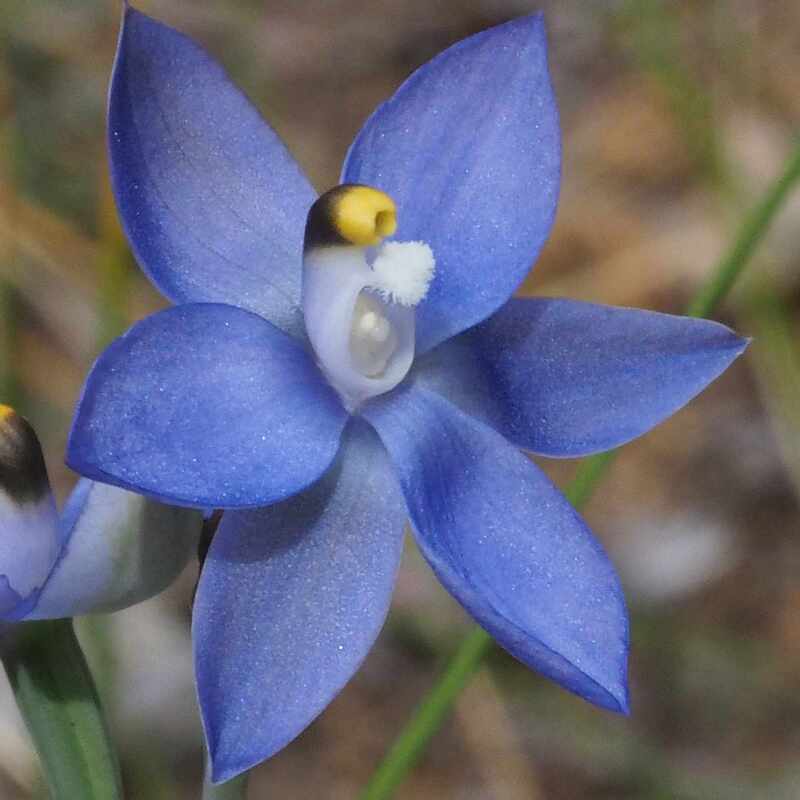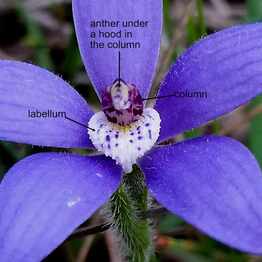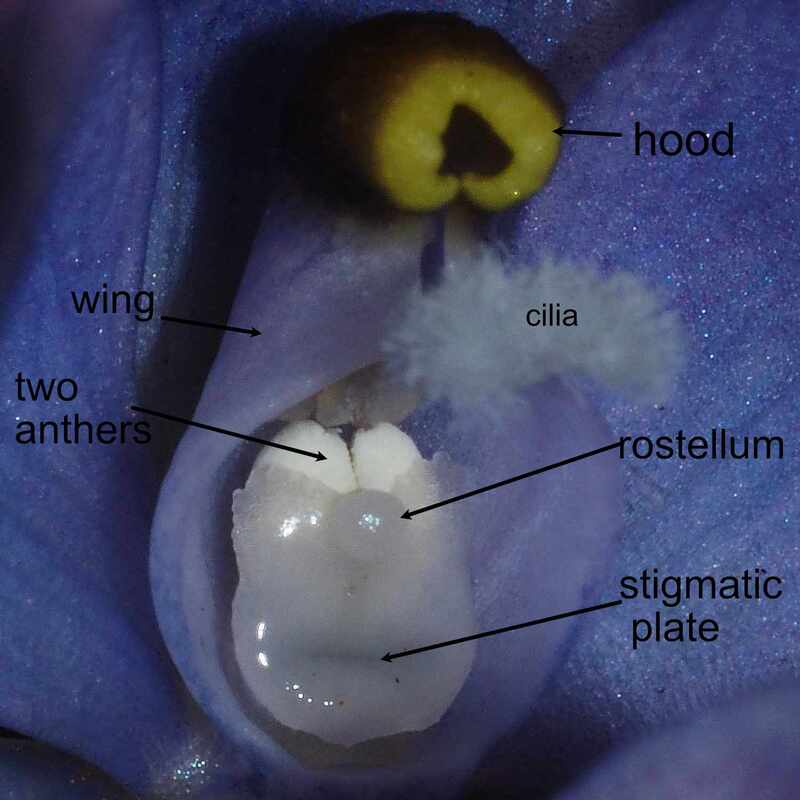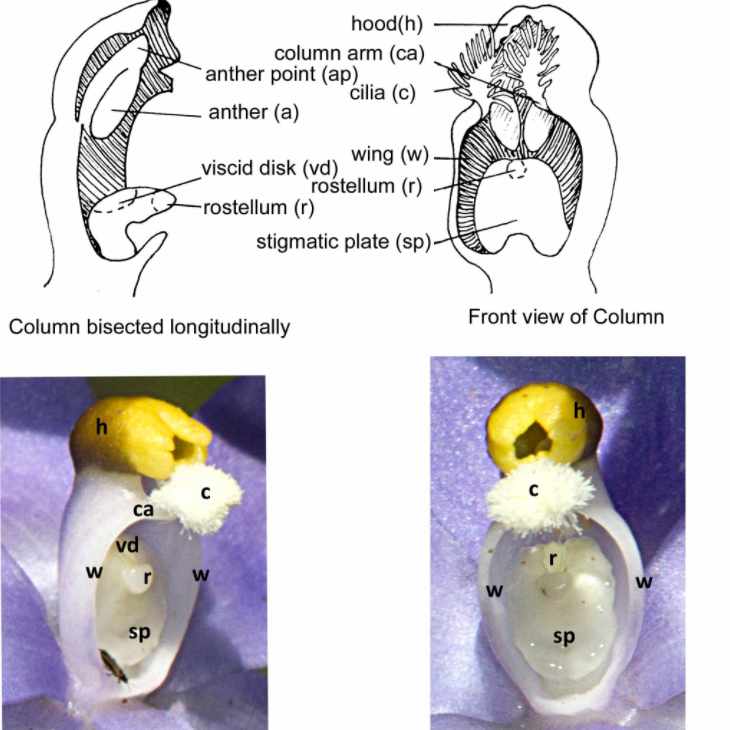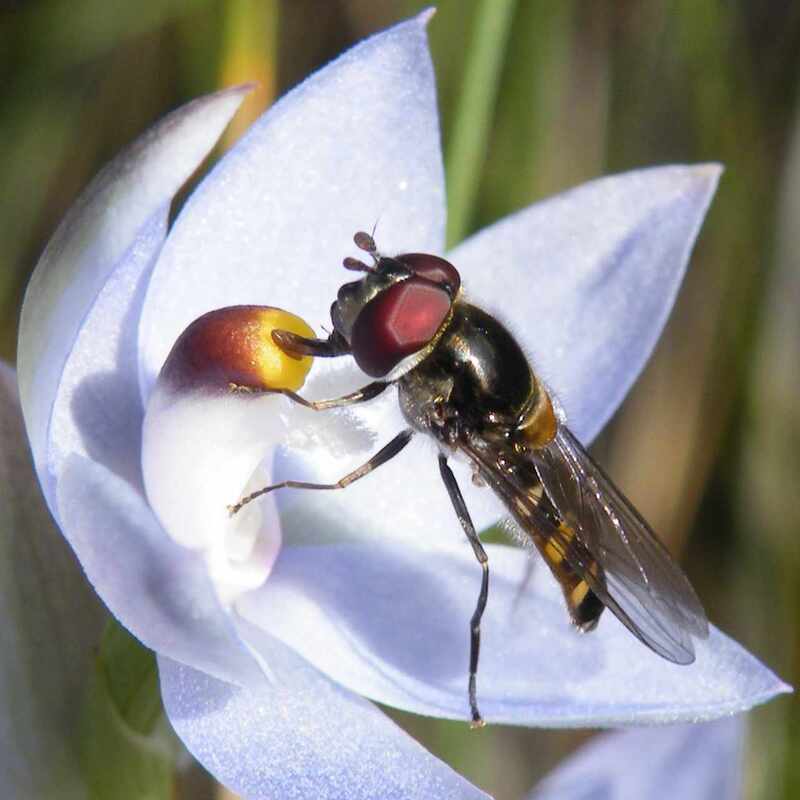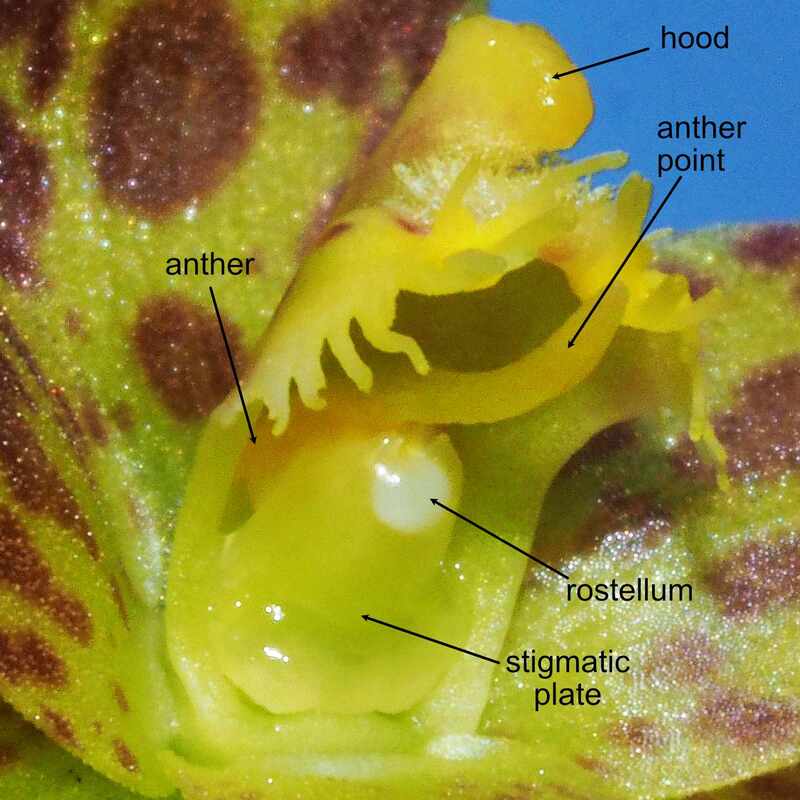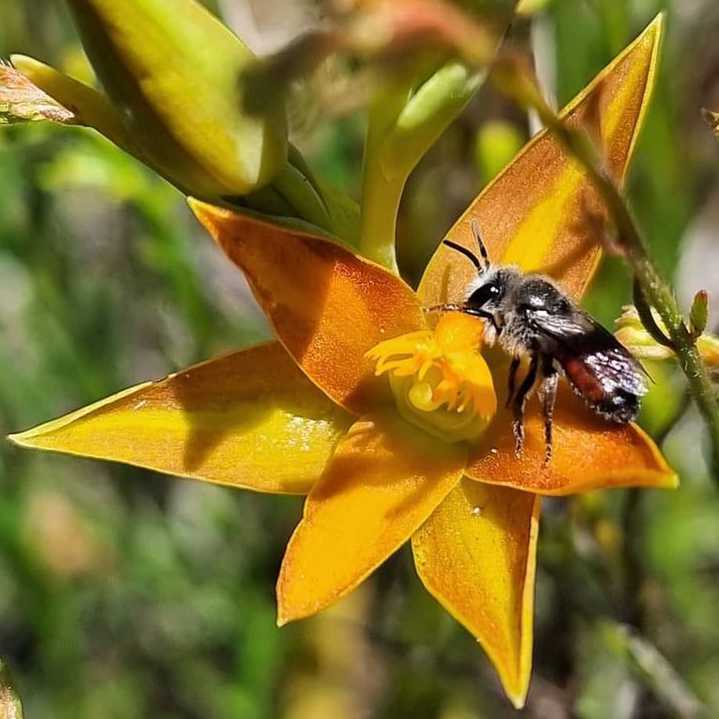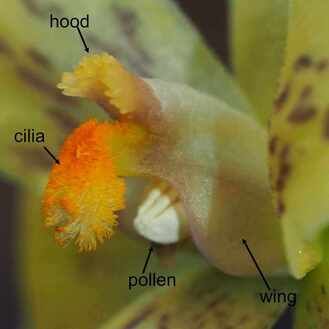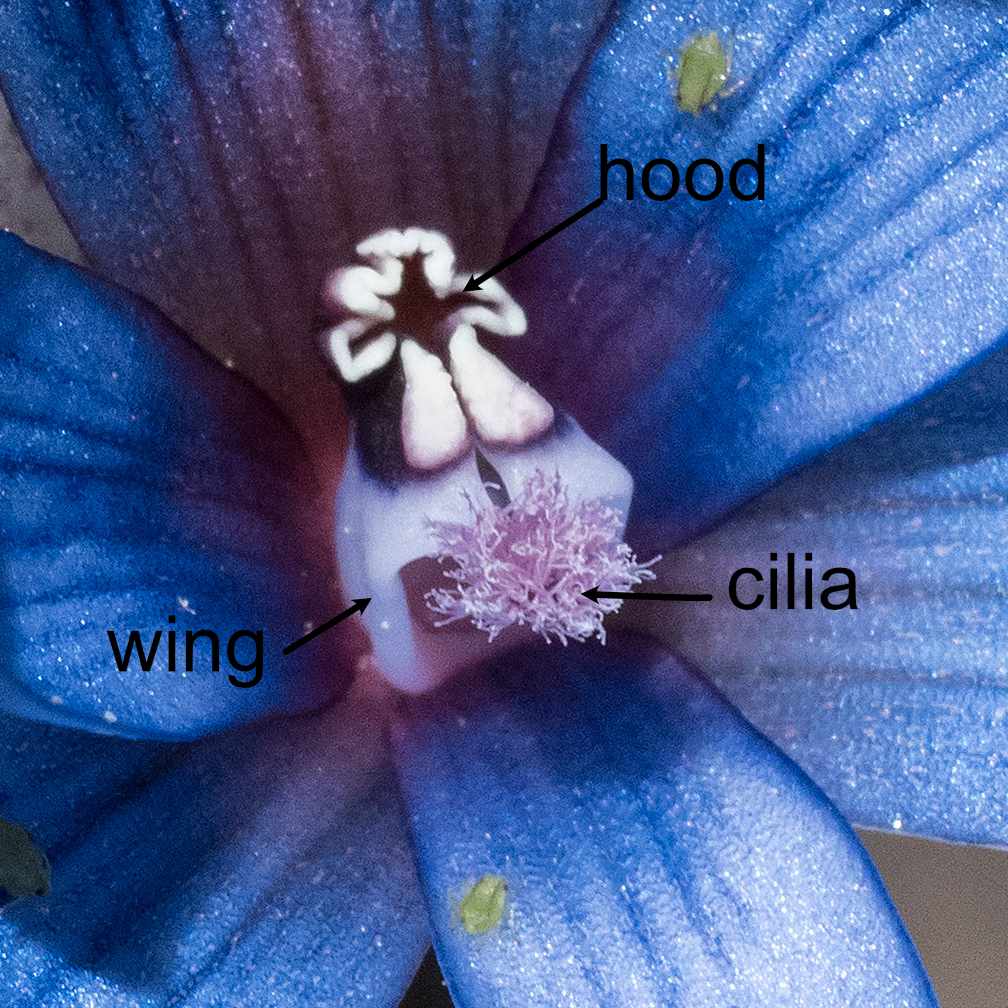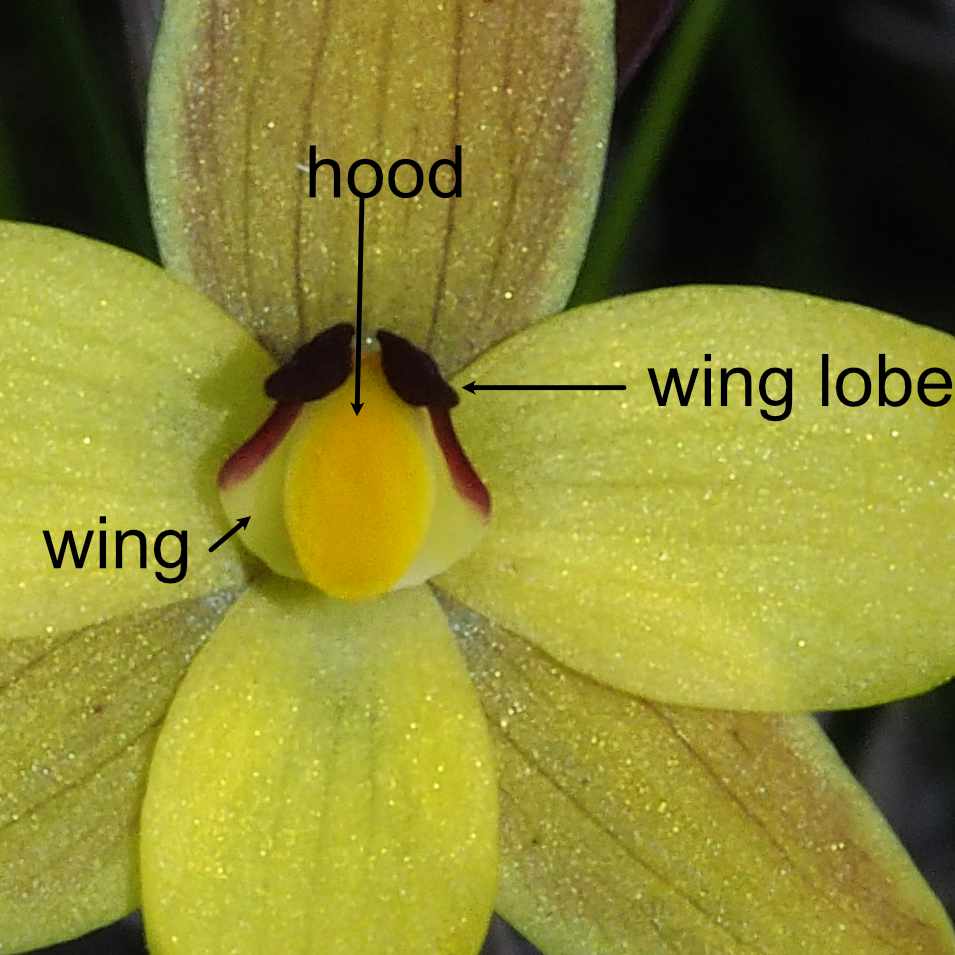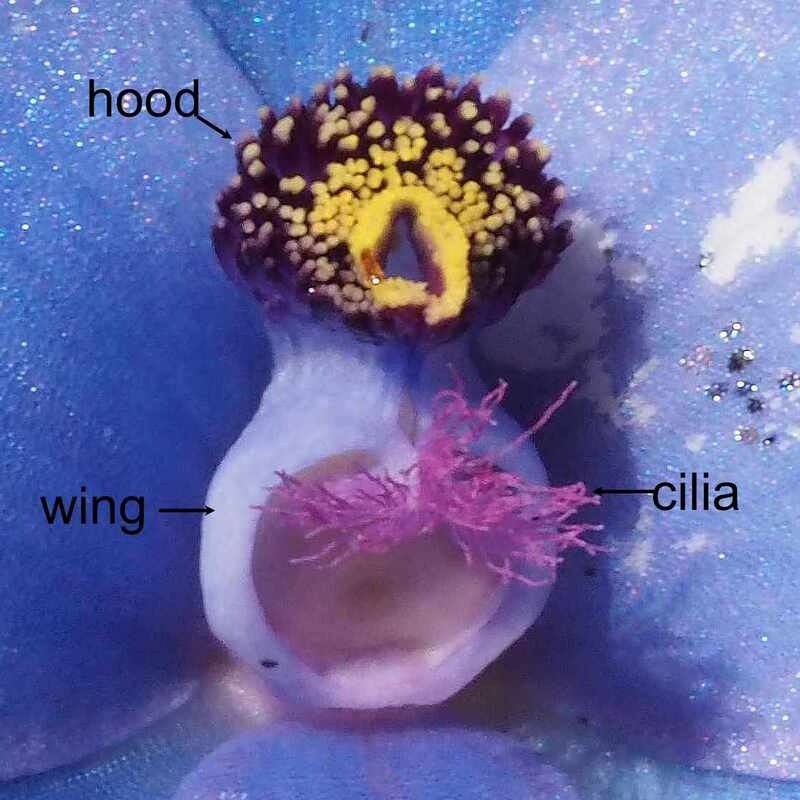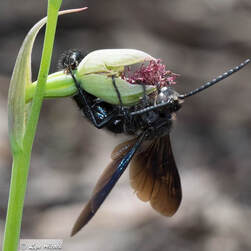Harrismith reserve adjoins the township of Harrismith, 73 kilometres east of Narrogin and 55 kilometres south-east of Wickepin. . The Oasis Hotel has accommodation, lunches, drinks and snacks. With an adjoining caravan park, Harrismith is a good spot to camp overnight and enjoy the wildflowers.
The landscape is a lateritic gravel plain that formed millions of years ago when the climate was wetter. Unusual circular hollows were once wetlands overlying granite base-rock.
As the climate became drier, wetlands dried out and were colonised by eucalypt and sheoak trees. Lateritic heath persisted on the surrounding gravelly plain and built up a raised doughnut shaped edge around each hollow.
Soils are mainly shallow lateritic ironstone and gravels with deeper white sandy topsoils in broad depressions. They are infertile and have poor water retention.
It is first class kwongan heath plain. Many heath plants flower after woodland wildflowers in other reserves have finished.
The best time to visit is from mid-August to November, with October being peak time for verticordias and other flowering shrubs. As there are few trees on this walk take water and walk at cooler times on hot days.
Ignore the small redundant sign at the trailhead that indicates three walk trails and follow the blue arrows/tall red-banded posts. Orchids flower in early/mid September, but many kwongan plants flowers later. At least 2 trips are needed to see the full wildflower spectrum.
This document contains a pictorial list of wildflowers in the reserve.
| harrismith_wildflowers_comp.pdf |
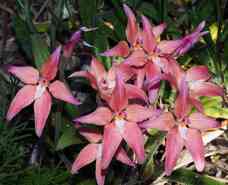 5 Cowslip/little pink fairy orchid hybrid
5 Cowslip/little pink fairy orchid hybrid There is no trail down to the valley, but a moderately easy 20 metre scramble down the slope reveals attractive woodland. There is a variety of everlastings and other flowers on the slope and valley. if you are lucky, you may find the cowslip/little pink fairy orchid hybrid.
Cars can reach the picnic table on the trail adjoining the airstrip by using the drive trail.
 Southern view along airstrip in mid October
Southern view along airstrip in mid October Vegetation on the uphill side of the airstrip is larger because of a chemical overspray, which killed large shrubs on the downhill side. Surprisingly there appears to be little long-term damage as smaller shrubs have already compensated. However, some kwongan plants depend on fire for seed germination and may not regenerate until this occurs.
There is a wonderful show of flowering shrubs by the airstrip in late September and October. Walk down the eastern airstrip to meet the track and return.
Harrismith reserve is a great spot for wildflower enthusiasts in spring. The trail and Toolibin Nature Reserve would make a good day trip from Narrogin or Wickepin.


